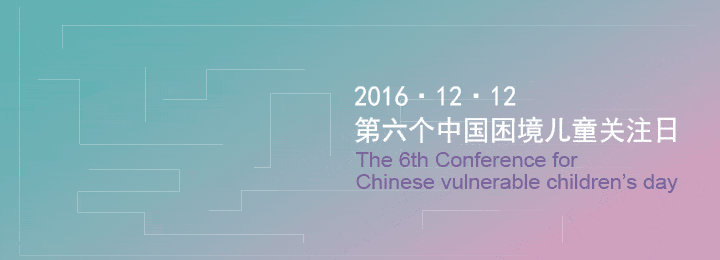
December 12 is China’s Vulnerable Children Day. In order to mark the occasion, Beijing Normal University‘s School of Social Development and Public Policy published “China’s Ten Milestones for Child Welfare and Child Protection in 2016” in partnership with the Charity Communication Research Center of the School of Media and International Culture at Zhejiang University. The authors identify ten milestone policy decision that took place over the last year, each of which had a big impact in the field of child welfare. They can be summarized as follows:
1) The Chinese government issues a national policy in response to issues concerning left-behind children in rural areas; the group is given an accurate definition as children whose parental guardians are absent.
In February 2016, the government issues the “Opinions of the State Council on Strengthening the Protection and Care for the Left Behind Children in Rural Areas”. This is the first time that the state comes up with a top-down policy design in an attempt to solve the problems concerning left-behind children in rural areas.
2) The Ministry of Civil Affairs establishes and consolidates a new administrative division in charge of children’s affairs, paving the way for the establishment of a high-ranking administrative entity in charge of child welfare and child protection.
3) The State Council decides to focus on the condition of vulnerable children and sets up a community child welfare inspector.
In June, the State Council issues the “Opinions on Strengthening Protection and Care for Vulnerable Children”. This is the first time that the state recognises its role in spearheading aid and support to vulnerable children. In addition, the policy sets up the goal of installing 690,000 community child welfare inspectors at the village committee level.
4) The State upholds two guiding opinions on deterring and punishing campus bullying.
In April and November, the government issues two “opinions” dealing with the issue of “campus bullying”. At present, China does not yet have any legal provisions for bullying in schools. These measures are conducive to improving and promoting legislation concerning youth behaviour.
5) The government strengthens its support for students with disabilities and speeds up system-building for recovery and rehabilitation.
6) The government decides to improve the construction of public facilities for mothers with babies and develops a timetable to install maternal facilities in public spaces.
China currently has 65 million babies under the age of three, and the number is bound to increase with the relaxation of the single child policy. To equip public spaces with breastfeeding facilities is conducive to improving the health of infants and of the society as a whole.
7) The government includes education in parenting within the national education policy and urges progress to be made on family education legislation.
8) A platform is established to release information on missing children to increase the accuracy and reach of the information; innovative technology to help child protection.
9) Recruitment of students to be paediatricians at the college level is resumed as a response to a nationwide shortage of paediatricians.
10) The government increases its efforts to improve education in the central and western regions and establishes higher goals for promoting the balanced development of compulsory education.
In order to reduce the regional disparities in educational resources, the government has over the years promulgated favourable policies to increase educational investment in the Central and Western regions. In 2016, the State Council issued a “Guiding Opinion on Speeding up Educational Development in the Central and Western Regions” in which it sets the goal of achieving a balanced development on compulsory education within the region, and establishes specific performance goals and implementation measures.



